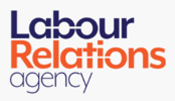Adoption leave and pay
Qualifying for adoption leave
To qualify for Statutory Adoption Leave, an employee must meet certain qualifying criteria. The criteria differ for UK and overseas adoptions and for intended parents of surrogacy arrangements.
Note there are additional notification and eligibility requirements for Statutory Adoption Pay.
Definition of an adopter
An 'adopter' is defined as 'a person who has been matched with a child for adoption'. An employee is 'matched with a child for adoption when an adoption agency decides that the employee would be a suitable adoptive parent for the child, either individually or jointly with another person'. Where two people have been matched jointly, the 'adopter' is 'whichever of them has elected to be the child's adopter for the purposes of the regulations. The employee becomes the child's adopter when he or she agrees with the other person, at the time at which they are matched with the child, that he or she will be the adopter.
An adopter may therefore be an individual who adopts or one member of a couple where the couple adopts jointly. This means that where a couple adopts jointly only one member of that couple can claim adoption leave. However, the other member of the couple, or the partner (this includes same-sex partners) of an individual who adopts, may be entitled to paternity leave and pay. The fact that adoption leave is only available to those who have been matched with a child through an agency means that, for example, stepfathers and stepmothers who wish to adopt their stepchildren are not eligible for adoption leave.
The definition of 'adopter' is modified slightly for overseas adoptions, to refer to 'a person by whom a child has been or is to be adopted' (as opposed to a person who has been matched with a child for adoption).
UK adoptions
An employee qualifies for 52 weeks' Statutory Adoption Leave when they adopt a child in the UK if they:
- Have been matched with a child to be placed with them by a UK adoption agency. (This may, exceptionally, include cases where an adoption agency places a child with approved foster parents who are also approved, prospective adopters. The adoption agency will supply the foster parents with correspondence which can be shown to the employer explaining that they have met the relevant criteria for being matched with the child for the purposes of adoption leave and pay and other entitlements open to adopters. The usual notification and service criteria will apply).
- Have notified the adoption agency that they agree that the child should be placed with them and agree with the date of placement.
- Notify you of when they want to take their Statutory Adoption Leave no more than seven days after they are notified that they've been matched with a child - see UK adoptions: notification and confirmation of adoption leave.
It does not matter how long the employee has worked for you.
The Statutory Adoption Leave period is made up of 26 weeks of ordinary adoption leave followed immediately by 26 weeks of additional adoption leave.
In addition, since the introduction of shared parental leave and pay on 5 April 2015, adopters can bring their adoption leave and pay to an early end to opt into shared parental leave and pay with their partner.
Adopters are also entitled to time off to attend pre-adoptions appointments - see statutory time off work for parental reasons.
Overseas adoptions
An employee qualifies for 52 weeks' Statutory Adoption Leave when they adopt a child from overseas if they:
- Have received official notification from the relevant UK authority of their eligibility to adopt a child from abroad.
- Have given you the correct notification - see overseas adoptions: notification and confirmation of adoption leave.
- Are the child's adopter. This is the person who will adopt or has adopted the child or, in a case where the child will be or has been adopted by two people jointly, whichever of the joint adopters has chosen to take statutory adoption leave in respect of the child.
Official notification for overseas adoptions
Official notification is written notification issued by or on behalf of the relevant domestic authority stating that the authority either is prepared to issue a certificate to the overseas authority dealing with the adoption of the child or has issued a certificate and sent it to that authority.
In either case, the certificate confirms that the adopter has been approved by them as being a suitable adoptive parent to adopt a child from overseas.
An employee needs to have 26 weeks of continuous employment at the date of the official notification.
Joint and individual adoptions
Where a couple is adopting jointly, they can choose who will take Statutory Adoption Leave and who (regardless of gender) will take Statutory Paternity Leave. They cannot both take Statutory Adoption Leave or Statutory Paternity Leave.
If an employee is adopting individually, only they are eligible for Statutory Adoption Leave - although their partner (regardless of gender) may be eligible for Statutory Paternity Leave.
Foster parents who adopt a child
A foster parent may be able to take Statutory Adoption Leave if they go on to adopt a child, but only if:
- The child that the employee fostered is then matched with them for adoption by a UK adoption agency. Adoption via a court order does not count.
- The child is then actually placed with them for adoption.
- The foster parents have not previously availed of adoption leave in respect of the same child in the circumstances described under the heading 'UK Adoptions' above.
The usual notification criteria still apply. The adoption leave only relates to the actual placement for adoption - any period of ordinary foster care does not count.
Special guardianships
A special guardian is usually someone with a close relationship with the child, such as a family member, former foster carer, or family friend. They need to apply to a court which will consider their suitability and the child's needs, based on a report from the local authority.
Statutory Adoption Leave is not available to special guardians.
Surrogacy and adoption leave and pay
An employee who becomes a parent through an arrangement with a surrogate mother is now also entitled to Statutory Adoption Leave and Statutory Adoption Pay.
The intended parents in a surrogacy arrangement (also known as Parental Order) may be eligible for adoption leave and pay where they intend to apply for or have already obtained, a Parental Order making them the legal parents of the child. Where a couple applies for a Parental Order only one of the couple will be able to take adoption leave and/or pay in relation to the child.
Eligibility criteria for adoption leave and pay
The eligibility criteria for adoption leave and pay are:
- they are an employee
- they have obtained a Parental Order for the child or have, on the day of the child's birth, applied for or intend to apply for such an Order
- the application for the Parental Order must be made within six months of the child's birth and the intended parents must expect the Parental Order to be made
They will also be entitled to the right to request a flexible working arrangement from their employer. See the right to request flexible working: eligibility criteria.
In a couple, the intended parent who does not take adoption leave and pay may be eligible for paternity leave and pay. Intended parents may also qualify for shared parental leave and pay where the parent who qualifies for adoption leave and pay chooses to return to work before the end of the adoption leave period.
Intended parents may also be entitled to unpaid time off to attend ante-natal appointments with the surrogate mother - see statutory time off work for parental reasons.
If they don't qualify for these, they could take annual leave or an agreed period of unpaid leave.
Enhanced adoption leave
Employers can make enhanced adoption leave arrangements to attract and retain employees, which are more generous than the statutory entitlements.
For example, you could allow employees with more than a year's service to take more than 52 weeks' leave.
You can offer these arrangements either as a contractual right or on a discretionary, case-by-case basis. When exercising discretion, caution should be taken to avoid claims of unfair treatment or discrimination.
See the Invest Northern Ireland Employers' handbook guidance on adoption leave and pay (PDF, 48K).
- LRA Workplace Information Service03300 555 300

